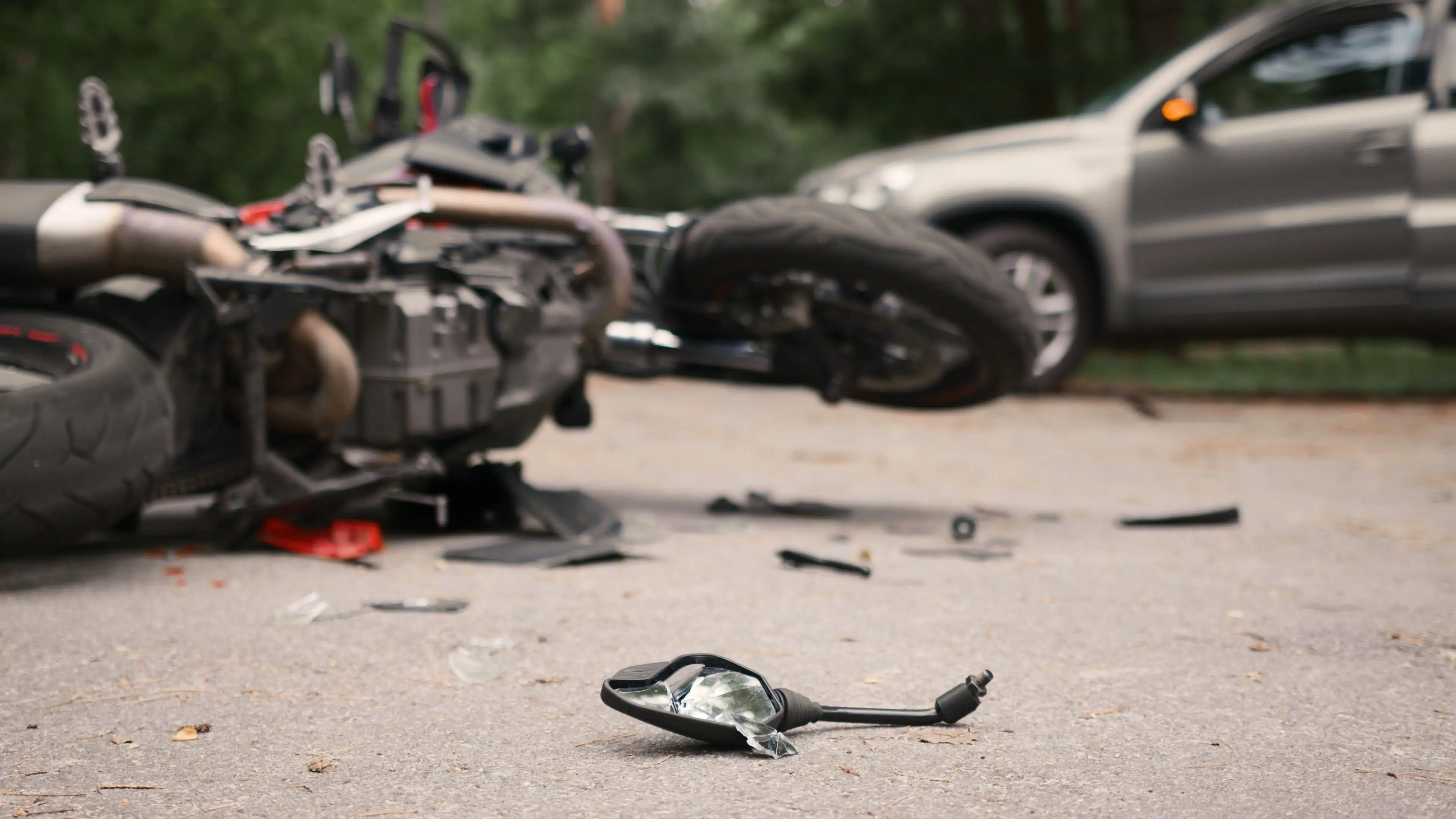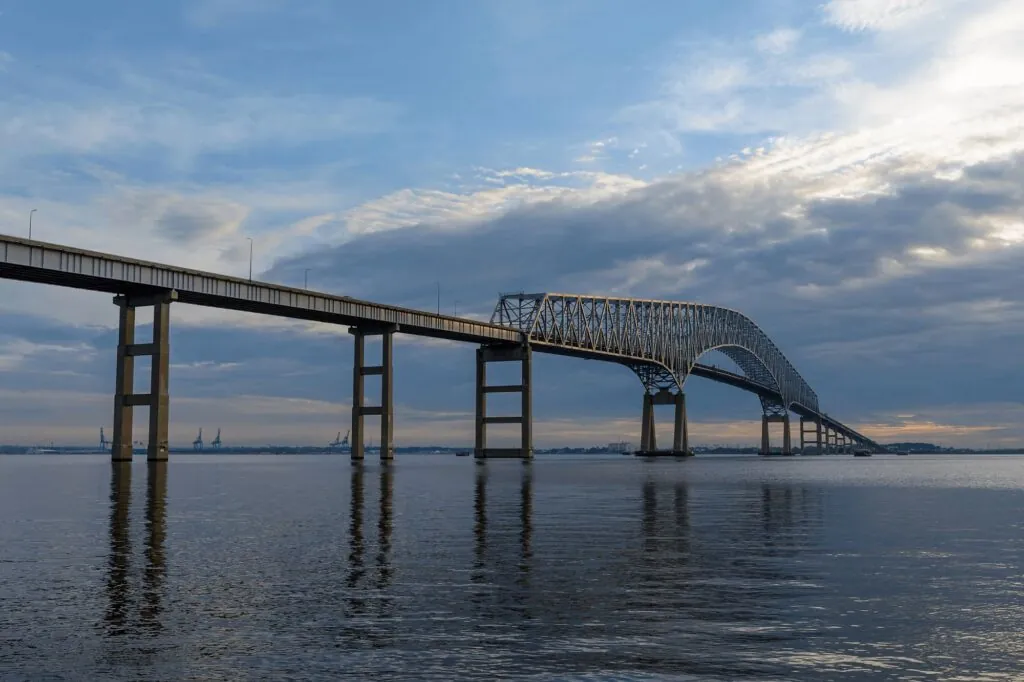Philadelphia Motorcycle Accident Lawyer
Motorcycle accidents are a significant concern in Philadelphia, often resulting in severe injuries due to the vulnerability of riders. The bustling urban environment, combined with frequent traffic congestion, increases the risk of such accidents. Victims of motorcycle accidents face not only physical and emotional trauma but also substantial financial burdens from medical bills and lost wages. Legal representation is crucial in these cases to ensure victims receive fair compensation and justice. Fulginiti Law specializes in handling motorcycle accident claims, offering dedicated support to those affected.
Common Causes of Motorcycle Accidents
Motorcycle accidents in Philadelphia occur for a variety of reasons, often due to the actions or negligence of other drivers or external factors. Understanding these causes can help in both prevention and legal action.
Distracted Driving
Distracted driving is one of the leading causes of motorcycle accidents, not only in Philadelphia but across the country. In today’s digital age, drivers often engage in activities that take their attention away from the road. These distractions can include:
Mobile Phones
Texting, making calls, or using apps while driving are all significant distractions. Because motorcycles are smaller and more difficult to see than other vehicles, a momentary lapse in attention can lead to devastating consequences. A driver looking down at their phone might miss a motorcyclist in their blind spot or fail to notice one when changing lanes.
In-car Entertainment Systems
Modern cars are equipped with sophisticated entertainment systems that can be distracting. Whether it’s adjusting the radio, interacting with a GPS, or watching videos, these distractions reduce a driver’s awareness of their surroundings, increasing the risk of missing a nearby motorcycle.
Eating or Drinking
When drivers eat or drink while on the road, their focus shifts away from driving. This can lead to slower reaction times and poor decision-making, which are particularly dangerous when a motorcyclist is nearby.
Reckless or Negligent Driving
Reckless or negligent driving behaviors are particularly hazardous to motorcyclists, who have less protection compared to those in cars. Several forms of reckless driving contribute to motorcycle accidents:
Speeding
When drivers exceed the speed limit, they reduce their ability to react quickly to unexpected situations. For motorcyclists, who are more vulnerable in collisions, speeding can be deadly. High-speed impacts often result in severe injuries or fatalities due to the force involved.
Aggressive Driving
This includes behaviors such as tailgating, frequent and erratic lane changes, and road rage. Aggressive drivers may not give motorcyclists the space they need on the road, leading to dangerous situations. For example, tailgating reduces the margin for error if the motorcyclist needs to brake suddenly, potentially causing a rear-end collision.
Failure to Yield
Many motorcycle accidents occur at intersections where a driver fails to yield the right of way. This can happen when a driver turns left in front of an oncoming motorcycle or when merging into traffic without checking for motorcyclists. Such errors can result in severe side-impact collisions, which are particularly dangerous for motorcyclists.
Road Hazards and Conditions
Motorcycles are more sensitive to road conditions than other vehicles. Even minor hazards can cause a motorcyclist to lose control. Common road hazards include:
Potholes
Philadelphia’s streets, like those in many cities, can be riddled with potholes. For motorcyclists, hitting a pothole can cause a loss of balance and control, leading to a crash. Unlike cars, motorcycles do not have the stability to absorb the impact of such road defects.
Debris
Objects on the road, such as gravel, leaves, or trash, can be dangerous for motorcyclists. These materials can reduce traction, causing the motorcycle to slip. Even small objects can cause significant accidents, especially if they are not visible until the last moment.
Weather Conditions
Weather plays a crucial role in road safety. Rain, snow, and ice can make roads slippery, greatly increasing the risk of accidents for motorcyclists. Wet roads reduce tire grip, making it harder to stop or maneuver. In winter, icy patches can form unexpectedly, leading to sudden and uncontrollable slides.
Mechanical Failures
Mechanical failures can be particularly perilous for motorcyclists. Unlike cars, motorcycles rely heavily on each component functioning correctly to maintain balance and control. Common mechanical failures include:
Brake Failures
If a motorcycle’s brakes fail, the rider may be unable to stop in time to avoid a collision. This is particularly dangerous in heavy traffic or at intersections where quick stopping may be necessary to avoid an accident.
Tire Blowouts
Sudden tire deflation can cause a motorcyclist to lose control. Motorcycles require both tires to be in good condition to maintain stability, so a blowout can lead to a serious crash, especially at high speeds.
Engine Malfunctions
Engine problems can cause a sudden loss of power or a complete engine shutdown. In heavy traffic, this can be catastrophic, as the rider may be unable to move out of the way of other vehicles or maintain control of the motorcycle.
Driver Inexperience
Inexperience plays a significant role in many motorcycle accidents. Both inexperienced motorcyclists and car drivers can contribute to these incidents:
Inexperienced Motorcyclists
New riders may lack the skills and experience needed to navigate complex traffic situations safely. They might struggle with controlling the motorcycle, especially when sudden maneuvers are required. For example, an inexperienced rider might not know how to handle a skid on a wet road or how to avoid obstacles.
Inexperienced Car Drivers
Drivers who are new to the road may not be accustomed to sharing it with motorcyclists. They might misjudge the speed or distance of a motorcycle, leading to dangerous situations. For instance, a new driver might not realize how quickly a motorcycle is approaching when making a left turn, resulting in a collision.
Understanding these common causes of motorcycle accidents can help in both preventing them and in taking appropriate legal action if an accident does occur. Each of these factors highlights the need for vigilance, both from motorcyclists and other drivers, to ensure the safety of everyone on the road.
Driving Under the Influence (DUI)
Driving under the influence of alcohol or drugs is a significant cause of motorcycle accidents. Both motorcyclists and other drivers are susceptible to impaired judgment, reduced reaction times, and poor decision-making when under the influence.
Alcohol Impairment
Alcohol impairs a driver’s ability to judge distances, speeds, and road conditions. For motorcyclists, alcohol can also affect balance and coordination, which are critical for safe riding. A drunk driver may fail to see a motorcycle in time, or a motorcyclist under the influence may misjudge a curve or a stoplight, leading to a serious crash.
Drug Impairment
Drugs, whether legal or illegal, can impair a driver’s ability to operate a vehicle safely. Prescription medications that cause drowsiness or impair motor skills can be just as dangerous as illicit drugs. When either the motorcyclist or another driver is under the influence of drugs, the risk of a collision increases dramatically.
Left-Turn Accidents
One of the most dangerous situations for motorcyclists is when a vehicle makes a left turn in front of them. This type of accident often occurs at intersections and is frequently the result of a driver failing to notice an oncoming motorcycle.
Misjudgment of Speed or Distance
Drivers often misjudge the speed and distance of an approaching motorcycle, believing they have enough time to turn left before the motorcycle reaches the intersection. This miscalculation can lead to a severe side-impact collision.
Failure to See the Motorcyclist
Due to their smaller size, motorcycles are less visible than cars. Drivers may simply not see the motorcycle when making a left turn, leading to a collision. This is especially common when a motorcyclist is obscured by other vehicles or road features.
Dooring Accidents
Dooring occurs when a parked car’s door is suddenly opened into the path of an oncoming motorcycle. This type of accident is particularly common in cities like Philadelphia, where street parking is prevalent.
Sudden Door Openings
Motorcyclists riding close to parked cars are at risk of being struck by a car door that is suddenly opened without checking for oncoming traffic. The impact can cause the rider to be thrown from their motorcycle or to swerve into traffic to avoid the door, both of which can result in serious injury.
Lack of Awareness
Drivers and passengers often forget to check their mirrors or look over their shoulders before opening their doors. This lack of awareness is a common cause of dooring accidents.
Group Riding Dynamics
Group riding, where motorcyclists travel together in a formation, can be enjoyable but also dangerous if not done properly. Accidents in group rides can occur due to several factors:
Poor Communication
Group riders rely on hand signals and other forms of communication to navigate safely. If a signal is missed or misinterpreted, it can lead to sudden stops or turns that cause collisions within the group.
Riding Too Close
Motorcyclists in a group may ride too close together, reducing the margin for error. If one rider makes a sudden move or encounters an obstacle, it can cause a chain-reaction crash involving multiple riders.
Inexperienced Riders in the Group
Mixing riders of varying experience levels can lead to accidents, as less experienced riders may struggle to keep up with the group or handle the challenges of group dynamics.
Night Riding Hazards
Riding at night presents unique challenges that can increase the risk of accidents for motorcyclists.
Reduced Visibility
At night, it is harder for drivers to see motorcycles, especially in poorly lit areas. The reduced visibility also makes it more difficult for motorcyclists to spot road hazards like potholes, debris, or animals.
Glare from Oncoming Vehicles
Headlights from oncoming vehicles can create glare, reducing a motorcyclist’s ability to see the road ahead. This can lead to missed turns, obstacles, or other hazards.
Fatigue
Riding at night often means riding when the body is naturally more tired. Fatigue can impair a rider’s reaction time and decision-making ability, increasing the risk of an accident.
Injuries Sustained in Motorcycle Accidents
Motorcycle accidents can result in a wide variety of injuries due to the high speeds and lack of protective barriers. Here is a detailed list of potential injuries sustained in motorcycle accidents, along with specific examples to provide a comprehensive understanding.
Head Injuries
Concussions: Often caused by a blow to the head. Symptoms include headaches, dizziness, and confusion. For instance, a rider losing control and hitting their head on the pavement, even with a helmet on.
Traumatic Brain Injuries (TBI): Can range from mild to severe, potentially causing long-term cognitive and physical impairments. A severe TBI could result from a high-speed collision, leading to loss of consciousness and long-term disability.
Skull Fractures: These are severe fractures that can lead to brain damage and require immediate medical attention. For example, a rider not wearing a helmet hitting their head on a curb.
Spinal Cord Injuries
Paraplegia: Paralysis affecting the lower half of the body, often resulting from lower spinal cord damage. For example, a rider thrown from their bike and landing on their lower back.
Quadriplegia: Paralysis affecting all four limbs, resulting from damage to the upper spinal cord. An instance could be a high-speed crash causing the rider to land on their neck.
Herniated Discs: This injury involves the soft cushion of tissue between the vertebrae in the spine pushing out, leading to back pain, numbness, and weakness in the limbs.
Road Rash
First-degree Road Rash: Minor scrapes and bruises, such as sliding on asphalt at a lower speed.
Second-degree Road Rash: Involves deeper layers of skin and often results in bleeding.
Third-degree Road Rash: Severe abrasions requiring skin grafts, occurring when a rider skids along the asphalt at high speed, causing deep layers of skin to be scraped off.
Broken Bones
Compound Fractures: Where the bone breaks through the skin, common in high-impact crashes. An example is a rider’s leg breaking upon impact with another vehicle.
Simple Fractures: Clean breaks that do not pierce the skin, such as a rider’s arm breaking upon hitting the ground.
Comminuted Fractures: Bones are shattered into multiple pieces, often requiring surgical repair.
Internal Injuries
Ruptured Spleen: Can result from blunt force trauma to the abdomen. For example, a rider being thrown against the handlebars during a crash.
Liver Lacerations: Serious cuts to the liver, requiring emergency surgery, often caused by a severe impact to the abdomen in high-speed collisions.
Kidney Damage: Can result from severe impacts to the lower back area.
Biker’s Arm
Nerve Damage: Can lead to long-term weakness or paralysis in the arm. An instance is a rider falling and absorbing the impact with their arm, leading to severe nerve damage.
Fractured Humerus: The upper arm bone can be broken upon impact, causing significant pain and requiring a lengthy healing process.
Facial Injuries
Broken Jaw: Often requires wiring the jaw shut for healing. For instance, a rider hitting their face on the handlebars or the ground.
Dental Injuries: Such as knocked-out teeth, requiring dental reconstruction, occurring when a rider’s face hits a hard surface during a crash.
Facial Lacerations: Deep cuts on the face that may require stitches and can lead to scarring.
Leg and Foot Injuries
Tibial Fractures: Commonly occur when the leg is trapped under the motorcycle, such as in a low-side crash where the bike slides out from under the rider.
Foot Crush Injuries: When the foot is trapped between the bike and the road, often leading to severe damage, as in a high-side crash where the bike flips and lands on the rider’s foot.
Ankle Sprains: Ligament damage from the twisting motion of the ankle during a fall.
Chest Injuries
Rib Fractures: Can lead to punctured lungs, such as when a rider’s chest hits the handlebars or the ground.
Cardiac Contusions: Bruising of the heart muscle from severe impact, which can occur when the chest forcefully strikes the bike’s fuel tank or another vehicle.
Pneumothorax (Collapsed Lung): Can result from a punctured lung due to a broken rib.
Psychological Trauma
Post-Traumatic Stress Disorder (PTSD): Flashbacks and anxiety related to the accident, often seen in riders after a severe crash.
Depression: Can occur due to long-term disability or chronic pain, leading to significant lifestyle changes and emotional distress.
Anxiety Disorders: Fear of riding again, leading to avoidance behavior.
Pelvic Injuries
Pelvic Fractures: These injuries often require surgical repair and long-term rehabilitation, typically resulting from a heavy impact to the hips during a crash.
Hip Dislocations: Can lead to chronic pain and mobility issues, often caused by landing heavily on one side.
Bladder or Urethra Injury: Damage to these organs can occur from pelvic fractures.
Soft Tissue Injuries
Ligament Tears: Such as a torn ACL from a twisting injury when the bike flips or the rider is thrown off.
Muscle Strains: Resulting from the sudden impact or forceful movements during the accident.
Tendonitis: Inflammation of tendons due to overuse or injury during the crash.
Whiplash
Neck Sprain: Can cause chronic neck pain and stiffness, commonly resulting from a rear-end collision.
Cervical Spine Damage: More severe cases involving the vertebrae and discs, often from a sudden, forceful back-and-forth movement of the neck.
Nerve Damage: Resulting in radiating pain, numbness, or tingling in the arms.
Shoulder Injuries
Rotator Cuff Tears: Common from falls or direct impact on the shoulder, such as in a side-impact collision.
Shoulder Dislocations: Requiring reduction and possibly surgery, often resulting from landing on an outstretched arm.
Clavicle Fractures: Breaks in the collarbone from direct impact.
Burns
Exhaust Pipe Burns: Direct contact with hot surfaces, such as the motorcycle’s exhaust pipe during a crash.
Friction Burns: From sliding on the road surface, resulting in severe skin damage.
Chemical Burns: Can occur if the bike’s fuel leaks and comes into contact with skin.
Crush Injuries
Compartment Syndrome: Increased pressure within muscles, leading to tissue death, often from being trapped under the motorcycle.
Crushed Limbs: May require surgical intervention and reconstruction, such as when a rider’s leg is pinned under a heavy vehicle.
Severe Bruising and Swelling: Resulting from the compression of muscles and tissues.
Compartment Syndrome
Acute Compartment Syndrome: Requires immediate surgery to prevent permanent damage, often following a severe impact or crush injury to a limb.
Chronic Compartment Syndrome: Develops over time with repeated pressure and swelling in the muscle compartments, potentially from prolonged riding and impacts.
Amputations
Traumatic Amputation: Limb severed during the accident, such as in a high-speed collision with a guardrail.
Surgical Amputation: Due to severe injury or infection, as in a leg crushed beyond repair.
Partial Amputation: Where only part of the limb is severed or crushed.
Dental and Jaw Injuries
Tooth Avulsion: Complete displacement of a tooth, often from direct impact to the face.
Jaw Fractures: May require surgery and immobilization, such as when a rider’s chin strikes the ground or another vehicle.
TMJ (Temporomandibular Joint) Damage: Resulting from severe impact, causing long-term pain and difficulty in jaw movement.
Eye Injuries
Corneal Abrasions: Scratches on the eye surface from debris or impact.
Orbital Fractures: Breaks in the bones around the eye, possibly leading to vision loss, often from a direct blow to the face.
Retinal Detachment: A serious condition that can lead to blindness if not treated promptly.
Steps to Take After a Motorcycle Accident
Seek Immediate Medical Attention
Your health is the top priority. Seek medical help immediately, even if injuries seem minor, as some injuries may not be immediately apparent. Prompt medical attention can also provide critical documentation for your injury claim.
Document the Accident Scene and Injuries
Take comprehensive photos of the scene, your motorcycle, other vehicles involved, and your injuries. Collect contact information from witnesses and make detailed notes about the accident while it is fresh in your mind. This documentation is crucial for building a strong case.
Contact a Personal Injury Lawyer
Engaging a lawyer early ensures that your rights are protected and helps you navigate the legal complexities of your case. Fulginiti Law specializes in motorcycle accident cases and can offer expert guidance and representation. An experienced lawyer will handle communications with insurance companies and other parties involved.
File a Police Report and Insurance Claim
Report the accident to the police and obtain a copy of the police report for your records. File a claim with your insurance company promptly, providing accurate and detailed information about the accident. Keep copies of all correspondence and documents related to the claim.
Importance of Not Admitting Fault
Do not admit fault or make any statements that could be interpreted as admitting fault at the scene of the accident or afterward. Determining fault should be left to the investigators. Any premature admission can significantly impact your ability to receive fair compensation.
How Fulginiti Law Can Help
Expertise in Motorcycle Accident Cases
Fulginiti Law has extensive experience handling motorcycle accident claims. Our team understands the unique challenges and nuances involved in these cases.
Proven Track Record of Successful Verdicts and Settlements
Our firm has a history of achieving favorable outcomes for clients, securing substantial compensation through both settlements and court verdicts.
Personalized Legal Strategy and Client Care
Fulginiti Law provides tailored legal strategies for each case, ensuring personalized attention and dedication to client needs. We prioritize open communication and support throughout the legal process.
Contingency Fee Basis – No Upfront Costs
Our firm operates on a contingency fee basis, meaning clients pay no upfront costs. Legal fees are only collected if a favorable settlement or verdict is achieved, reducing financial risk for clients.
Contact Information for a Free Consultation
Potential clients can easily reach out to Fulginiti Law for a free consultation. This initial meeting helps assess the case’s merits and outlines the next steps for pursuing a claim.



